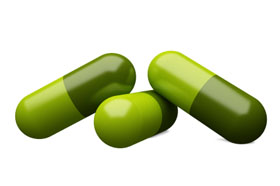What You Can Do to Keep Your Bones Healthy

A new study from the Texas Tech University found that the combined supplementation of green tea extract and vitamin D can improve bone health, repair bone damage caused by inflammation and reduce the product of inflammatory substances.
In a nutshell, the bones are responsible for holding everything together and help in keeping them in place and in the right position. The human skeletal system is composed of bones and other supporting components like tendons, cartilages and ligaments that holds the bones together and supports skeletal movement. The main function of the skeletal system is to serve as a protection and support for essential body organs like the heart, brain and lungs, and the same time act as a framework for the muscles and other tissues like the skin. The bones comprise around 30 to 40 percent of the body’s total weight.
The development of the bones starts during the early gestation period in pregnancy. A new born baby has around 300 bones and some of the bones fuse together as the person grows older; an adult has an estimated 206 bones. Beside its function of supporting the whole body, the bones, especially the long bones in the arms and the body’s lower extremities, are also responsible for the production of red blood cells. This process takes place in the bone marrow is called haematopoiesis.
Taking good care of the bones is important to maintain overall health. Lack of proper nutrition and sufficient exercise can lead to bone problems like osteoporosis, which is more popular in women, and bone cancer and the growth of bone tumors. The lesser popular bone disease are osteogenesis imperfecta or what is popularly termed as the brittle bone diseases and Paget’s bone disease associated with the weakness of the bones. Genetically predisposed individuals with a history of having bone diseases can have high risks of developing the condition. But poor nutrition plays a vital role as well.
Your Body Needs Calcium
Calcium is one of the important nutrients needed by the bones to promote growth and sustain strength and proper function. It is also needed to help the nerves, muscles and the heart to function properly. Different studies have shown that the lack of calcium in early life can lead to low bone mass and increased fracture rates in late-adult life. This leads to osteoporosis and other diseases associated with bone weakness. Vitamin D, on the other hand, is an important calcium culprit that promotes the efficient absorption of calcium during digestion. It also helps to maintain sufficient concentrations of serum calcium and phosphate to keep the bones in shape and sustain growth. Vitamin D deficiency makes the bones brittle, thin and out of shape.
A study conducted by a team of researchers from the Health Sciences Center of Texas Tech University found that the combination of polyphenols from green tea extract and alfacalcidol in Vitamin D can improve bone structure, strength and stability. The researchers used mice subjects and supplemented their diet with green tea polyphenols or alfacalcidol and found that the compounds have the potential to reverse bone damage caused by chronic inflammation while the supplementation of both compounds can sustain bone strength and structure. The study was published in The Journal of Nutritional Biochemistry.
Head researcher Dr Chwan-Li Chen said that the effects of polyphenols and alfacalcidol in maintaining bone microstructure demonstrate its significance in preventing the onset of osteoporosis. This is primarily caused by the anti-inflammatory properties of polyphenols from green tea and vitamin D alfacalcidol’s role in better calcium absorption.
Chronic inflammation of the bones has been long linked to the development of bone loss and deterioration through excessive production of inflammatory molecules and oxidative stress. Different anti-inflammatory compounds and antioxidants from isoflavones from soy products, polyphenols from green tea and as well as vitamin D can inhibit the production of inflammatory compounds in the body. Green tea has been the subject of different studies examining the health benefits of its strong antioxidant and anti-inflammatory properties. The new study evaluates its efficacy together with alfacalcidol in maintaining bone health and preventing bone diseases associated with low bone mass and bone weakness like osteoporosis.
The researchers reported that the combination of the two compounds reversed the changes in bone structure caused by inflammation. They were also found to strengthen the bones and suppress the production of inflammatory substances.
Foods for Healthy Bones
Sources of Calcium
The recommended dietary intake of calcium for adults is at least 1000 milligrams in a day. But this will primarily depend on the person’s weight, age and special conditions like pregnancy requires increased dosage of calcium. The easiest way to get calcium is by taking calcium supplements. But eating the right kinds of food is the best natural way of supplying the body with its much needed nutrient. The richest sources of calcium are the following:
- green leafy vegetables like spinach, kale and broccoli
- oranges
- beans
- peanuts
- tofu and other soy products
- sea foods like sardines and salmon
- sesame seeds
- brown sugar
- almonds
- tortillas
- corn
- molasses
Sources of Vitamin D
Vitamin D is important for the better absorption of calcium. Without vitamin D, calcium may be wasted and flushed out of the body. The recommended dietary intake of vitamin D is 200 IU for adults and the recommended dosage increases as the person grows older. Vitamin D has a very low bioavailability in foods. The richest sources, however, are fish flesh and fish liver oils. Vitamin D is also found in egg yolks, cheese and beef liver. Due to the rarity of the natural sources of vitamin D, fortification of the nutrient in processed food products is popular amongst food manufacturers. In the US, vitamin D fortified milk supplies most of the population’s vitamin D requirement. Some brands of margarine, yogurt, and orange juice also fortify their products with vitamin D.
Exercise for Healthy Bones
Like the muscles, the bones are living tissues that also needs exercise to become stronger. And the best exercise for the bones is the weight-bearing kind. This includes dancing, tennis, climbing stairs, jogging, hiking, walking and weight training. Together with a healthy diet, involving in physical activities can significantly help in keeping the bones healthy and strong.
Sources
nutraingredients.com
nlm.nih.gov
medicalnewstoday.com
ods.od.nih.gov
niams.nih.gov
orthopedics.about.com
niams.nih.gov
Posted: November 7th, 2010 under osteoporosis.
Tags: foods for healthy bones; natural ways to keep the bones healthy; natural ways to promote bone health
Comments: none

















